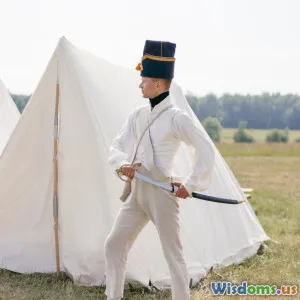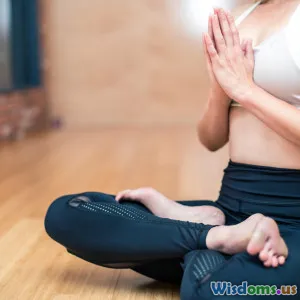Lessons from Historical Beauty Icons
7 min read Explore timeless lessons from historical beauty icons that still influence modern fashion and self-expression. (0 Reviews)Lessons from Historical Beauty Icons: Timeless Style Insights
Introduction
Beauty transcends time. While trends come and go, the allure and lessons drawn from iconic figures of history remain a source of inspiration today. These historical beauty icons didn’t just set trends—they symbolized ideals of elegance, confidence, and innovation that continue to shape modern fashion and personal style.
But what can today’s fashion enthusiasts and beauty aficionados really learn from them? This article dives deep into the timeless lessons of historical beauty icons—from Cleopatra’s legendary allure to Coco Chanel’s revolutionary simplicity—drawing insights that inspire and empower.
Defining Beauty Beyond Appearance
The Power of Confidence
Historical figures like Queen Elizabeth I demonstrate that beauty is as much about attitude as appearance. Her fiery red hair, stark white makeup, and elaborate gowns were not just cosmetic choices but symbolic armor projecting strength and sovereign authority. Elizabeth’s style conveyed confidence and control—crucial components to her enduring image.
Modern psychology supports this: studies show a direct link between self-confidence and perceived attractiveness. Elizabeth’s example teaches us that cultivating inner conviction dramatically enhances outward beauty.
Embracing Individuality: The Case of Frida Kahlo
Artist Frida Kahlo defied conventional beauty standards of her time with her unibrow and strong features, which she confidently accentuated rather than concealed. Her unapologetic celebration of her unique physical traits challenged the norms and inspired generations to embrace individuality.
In today's age of hyper-curated social media images, Kahlo’s example encourages us to value our distinctiveness and authenticity over conformity.
Innovation in Beauty and Fashion
Coco Chanel: Redefining Elegance and Comfort
Before Chanel, women's fashion was often restrictive and ornate. Chanel revolutionized this with her introduction of the little black dress, costume jewelry, and jersey fabric, combining simplicity with refinement. She taught the world that elegance could be accessible and comfortable without sacrificing style.
Her legacy is reflected in modern minimalist styles and the widespread acceptance of comfort-focused fashion—a reminder that innovation often involves challenging existing conventions.
The Enduring Influence of Ancient Egyptian Cosmetics
Cleopatra is enshrined in beauty lore, partly due to her use of cosmetics that were revolutionary in her era. Ancient Egyptians emphasized eye makeup not only for aesthetics but also believed it had protective and spiritual significance.
The iconic kohl eyeliner she popularized remains a staple in modern makeup, showing how functionality and symbolism can merge to create timeless beauty rituals.
Cultural Impact and Social Statements
Marilyn Monroe and the Democratization of Glamour
Marilyn Monroe’s appeal lay in her ability to combine vulnerability with glamour, captivating diverse audiences. She transformed the notion of beauty from inaccessible fame into a more approachable ideal, inspiring millions.
Her openness about insecurities and imperfections sparked a cultural shift, laying the groundwork for today's conversations about representation and body positivity.
Audrey Hepburn: Elegance with Purpose
More than a style icon, Hepburn’s enduring legacy stems from her humanitarian efforts and an aesthetic that expressed grace without extravagance. Her look—simple black dresses, neat updos, and minimal makeup—cemented the idea of refining beauty through modesty and purpose.
This teaches modern audiences that beauty is holistic, tied to values and actions beyond the visual.
Practical Lessons for Today’s Fashion & Beauty Enthusiasts
Prioritize Confidence and Self-Expression
As evidenced by Elizabeth I and Frida Kahlo, confidence is transformative. Embracing what makes you unique helps elevate your personal style organically.
Challenge Norms and Innovate
Like Coco Chanel, don't hesitate to break traditional rules to create comfort and individuality in fashion.
Recognize the Power of Symbolism
Ancient Egyptian cosmetics illustrate how beauty rituals can serve deeper cultural and psychological roles. Modern beauty lovers can experiment with symbolic colors and styles to empower themselves.
Value a Holistic Approach
Audrey Hepburn’s example shows that inner virtues amplify physical beauty, urging us to develop character alongside appearance.
Conclusion
The lessons from historical beauty icons are multifaceted—blending confidence, innovation, cultural expression, and ethical values. Their stories remind us that beauty is not a fixed ideal but an evolving narrative intertwining personal empowerment and societal influence.
By integrating these timeless lessons, modern individuals can navigate fashion and beauty with greater authenticity and purpose. Embracing history’s icons illuminates paths to self-expression that are as relevant now as ever, encouraging us to craft our unique beauty legacies.
References:
- Brockes, Emma. Elizabeth: The Making of a Queen. 2011.
- Herrera, Hayden. Frida Kahlo: Making Her Self Up. 2017.
- Madsen, Axel. Chanel: A Woman of Her Own. 2013.
- Makeup Museum (makeupmuseum.org): History of Egyptian cosmetics.
- Spoto, Donald. Marilyn Monroe: The Biography. 1993.
- Berg, Ronald. Audrey Hepburn: A Bio-Bibliography. 1988.
Through the prism of history, fashion and beauty unfold not just as outward appearances, but as powerful tools of identity, culture, and change.
Rate the Post
User Reviews
Other posts in historical figures
Popular Posts


















